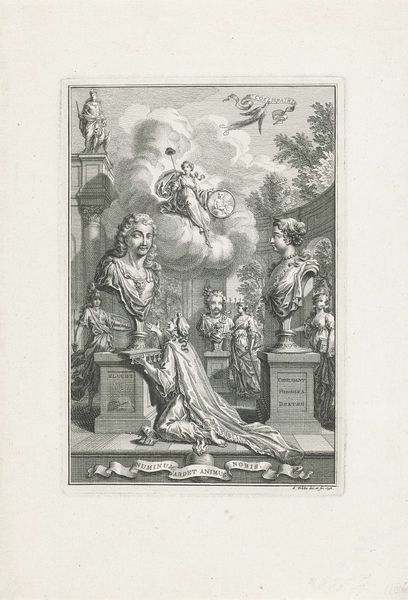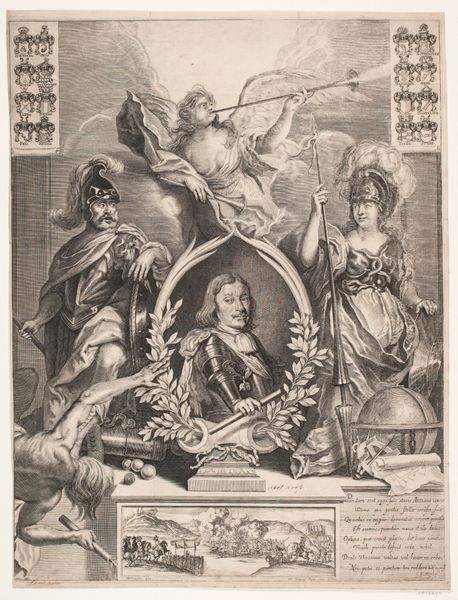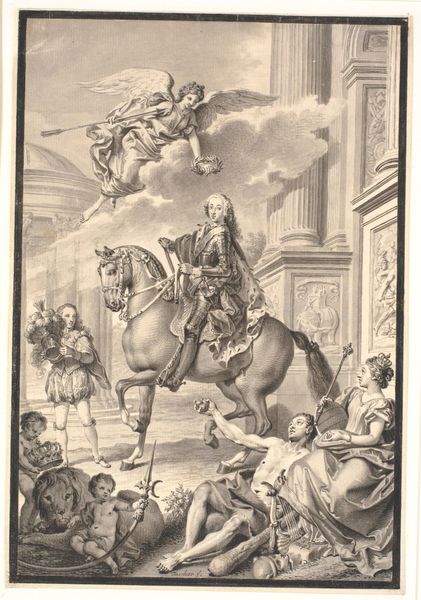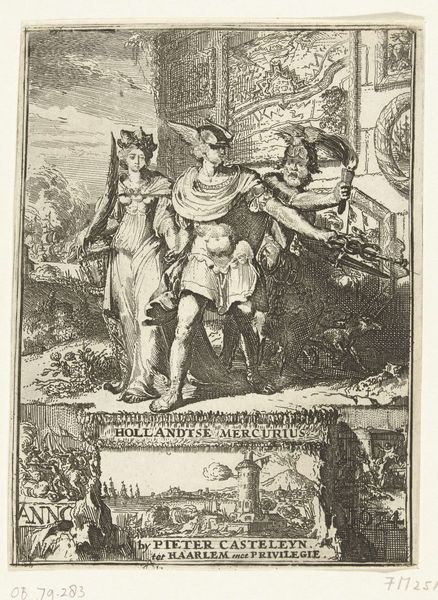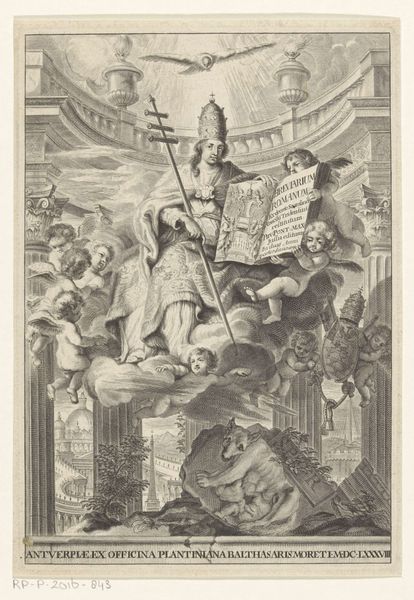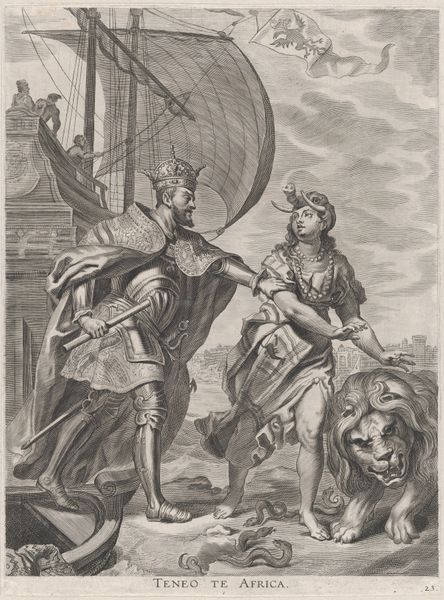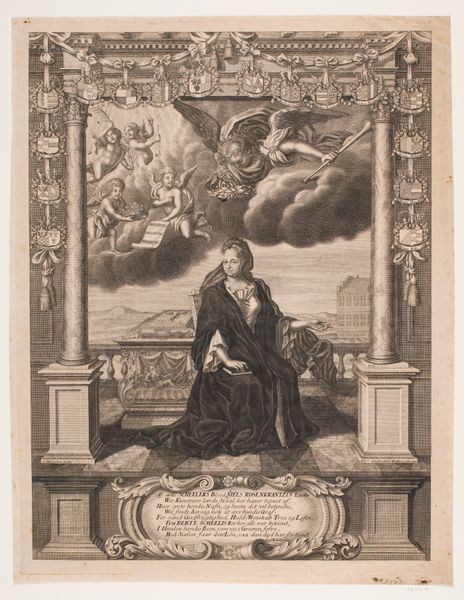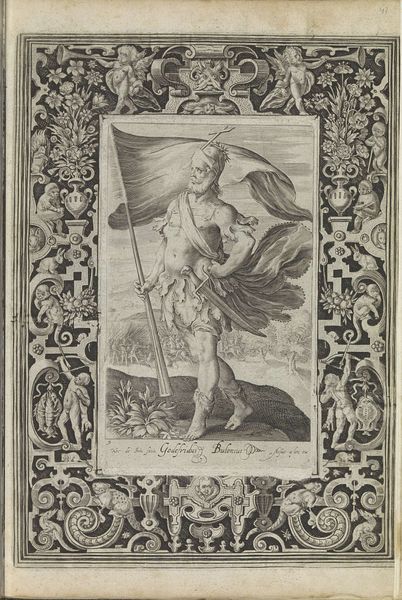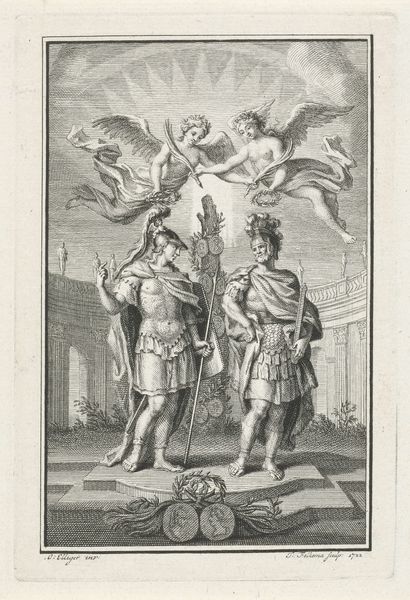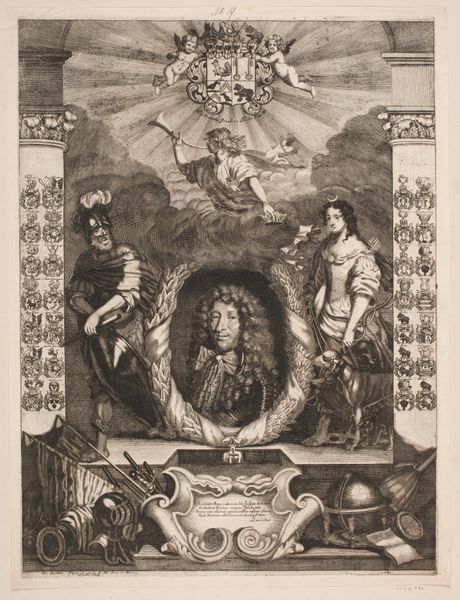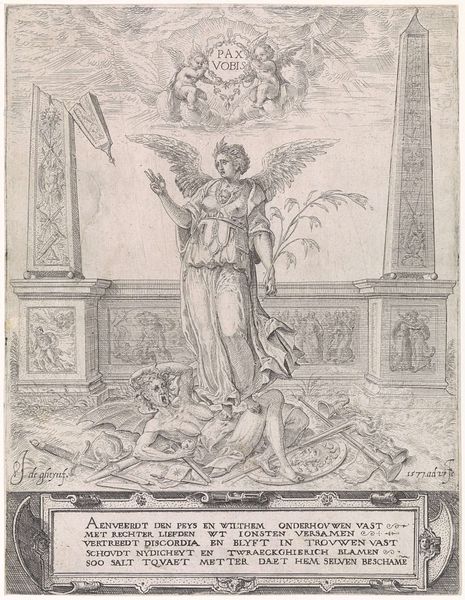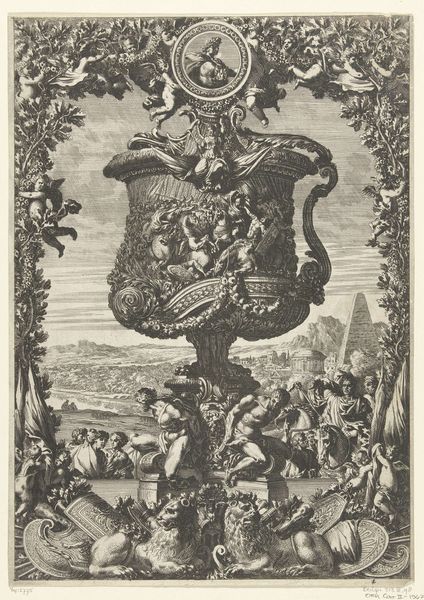
print, engraving
#
portrait
#
baroque
# print
#
old engraving style
#
figuration
#
line
#
history-painting
#
engraving
Dimensions: 660 mm (height) x 475 mm (width) (bladmaal)
Editor: This is a print of "Niels Rosenkrantz" from between 1675 and 1680, created by Hubert Schaten. It's a baroque engraving. What strikes me is the very formal presentation, almost staged, with the columns and the hovering figure. What’s your interpretation of its place within its historical moment? Curator: The Rosenkrantz portrait is fascinating when considered within the power structures of the time. Engravings like this served as potent tools for constructing and disseminating specific narratives about individuals and their roles. It is not only a portrait, but a piece of political imagery that contributed to Niels Rosenkrantz's public identity. The city depicted in the background, his armor, the angel, even the columns - all strategically build this image. Editor: Political imagery, could you elaborate on that? It feels almost celebratory but stiff. Curator: Absolutely. Ask yourself: who was meant to view this image, and what message was the artist attempting to convey? Prints were easily reproduced and widely circulated, therefore the image of a distinguished military man could become quite prolific in society. This work underscores Rosenkrantz's importance through allegorical elements - a symbolic victory over those considered outside that social echelon. Editor: The use of allegorical figures makes sense in constructing that narrative. The angel with the horn is more than ornamentation, right? Curator: Precisely. This angel isn’t merely decorative. It trumpets Rosenkrantz’s virtues and successes. Such artistic decisions can often tell us more about how political elites wanted to be perceived versus their true nature. Who do you think funded this kind of endeavor, and who did that exclude? Editor: I hadn't thought about the limitations of this medium in who it reached! Seeing it as part of this cultural landscape shifts my perspective a great deal. Thank you. Curator: It's always fruitful to consider not just *what* is depicted but also *why* and *how* art functions within its social context. Understanding the public role of art lets us unlock layers of meaning often missed by the naked eye.
Comments
No comments
Be the first to comment and join the conversation on the ultimate creative platform.
